NIL
An interview with the co-founder of Michigan’s NIL collective
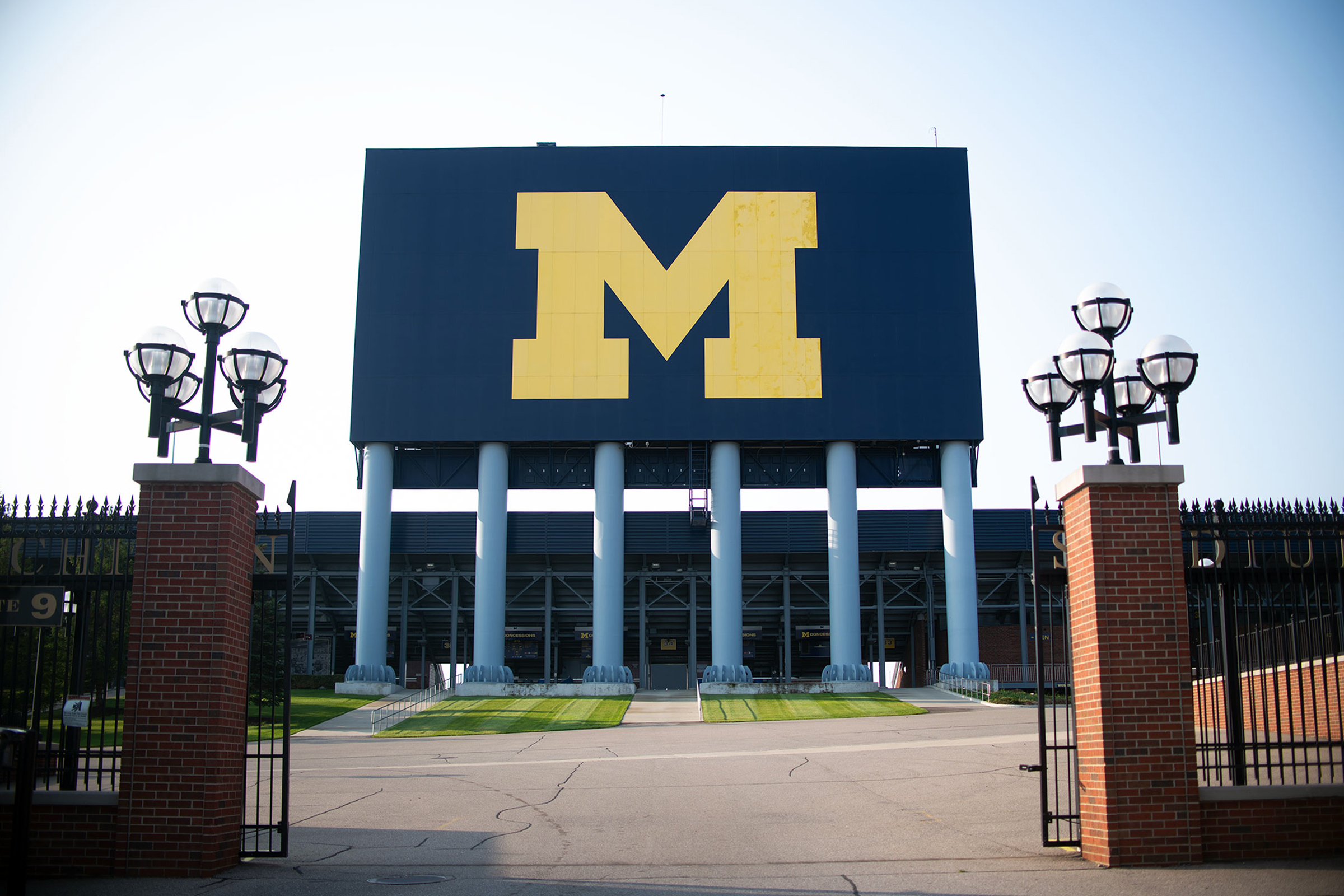
Last week, a federal judge made a landmark decision that transformed the world of college athletics. Schools were granted the authority to compensate athletes directly.
The court decision also regulated rules concerning name, image and likeness (NIL) payments, a ruling that came as Michigan’s NIL collective, Champions Circle, continues to thrive.
Before the ruling, many payments mirrored a “pay-for-play” model, where boosters and non-profit collectives would pay athletes significant amounts of money for minor services with the intention of bringing them to a certain school. Now, all NIL deals must pass through a clearinghouse to ensure athletes are receiving compensation for no more than their “fair market value.” Deals that don’t meet this criteria will be denied by the NCAA.
Like collectives around the country, Champions Circle is looking to adapt to the new NIL world. The Michigan Daily’s Jordan Klein sat down with Champions Circle co-founder Jared Wangler to discuss the collective’s strategy in the revenue-sharing era.
Responses have been edited for clarity.
Jordan Klein (JK): Players now have to be compensated for their “fair market value,” as approved by a Deloitte clearinghouse. How does that change the deals and other things Champions Circle does to get athletes to the University of Michigan?
Jared Wangler (JW): It’s a great question. I think everything you’re looking for is tailored around athlete compensation in this new revenue-sharing world, with increased oversight from the clearinghouse, and a little bit more regulation around athlete compensation outside of what the university can offer. With the new House settlement, universities are now permitted to share up to $20.5 million worth of benefits in Year 1 one. That will increase by 4% year over year, all the way to Year 3. Then, it will reset based on the equation that they came to, which is 22% of the average annualized revenues of the Power Four schools. That’s what the schools are now permitted to share.
What’s difficult is that the market for athlete compensation currently outweighs what the universities are able to bear. If you look across college football, men’s basketball, women’s basketball, softball, wrestling … If you want to be competitive at a national-title level or a conference-title level, you need to have adequate funding for what the talent costs.
I could walk you back four years when schools couldn’t provide anything, and the only money that could be provided was from brands and collectives. Most of the major markets created these collectives as a way to aggregate capital to pay the student athletes. The cap at that point was zero dollars, and there wasn’t regulation around how much money you could pay the student athlete, and what the exchange of services for. It was very laissez-faire. Now, the cap is $20.5 million, and any dollars above the cap that are being used for talent acquisition and talent retention. Those are going to be more regulated by the Deloitte clearinghouse, as you reference.
The Deloitte clearinghouse will be reviewing any deals that come from associated entities at the universities. Associated entities can mean a lot of things, but primarily they’re going to start with collectives and the multimedia rights holders. The multimedia rights holders, those are the Learfields of the world, the Playflys of the world. Think of it as the corporate sponsorship arm of these athletic departments.
In this current state, I’m bringing it back to where talent costs have gotten. You might have seen Texas Tech pay over $55 million worth of contracts to its student athletes. That’s football, that’s men’s basketball, it’s women’s basketball, baseball, softball … that’s their pool. That’s $20.5 million of revenue share from the university, and about $35 million coming from affiliated entities. It might be their collective, it might be Learfield, Playfly, whatever their MMR holder is, or a combination of the two. In this world, where there’s a clearinghouse to decide whether the deals are fair market value or not, it is the job of these collectives and associated entities, to have enough deal flow for the athletes that will pass through the ‘sniff test.’ That can be used in conjunction with the revenue sharing to come to a total compensation package that is agreeable to.
It’s probably not a secret like right now that most college football budgets, if you’re trying to compete at the top level, are between $20 and $30 to $35 million. That’s just football. And then basketball. Men’s basketball is anywhere between $10 million, and in some markets, up to $20 million. When you’re adding all these budgets together across multiple sports, you need more than just $20.5 million if you’re at a place like Michigan, Ohio State, Auburn, Alabama, Southern California, Texas.
That’s where you’re seeing these collectives and multimedia rights holders work together to get as much capital as they can, to then use and underwrite contracts for the athletes that will be above the cap. They have to be done in a way that can pass the clearinghouse standards for fair market value.
In practice, let’s say it’s a women’s basketball player, starting point guard, making $1 million. Let’s say $500,000 of it was going to come from revenue sharing, and $500,000 of it was going to come from the collective. The payment can’t just be a lump sum payment of $500,000 — show up to an event and then be on your merry way. There has to be actual work done and actual services rendered for the $500,000. That might be spread out over 12 months. It might look like 20 different commercial activations. They might do signing events, they might have merchandising promotions, they might work with brands that are affiliated with the collective or the multimedia rights holder, there might be media appearances.
There’s a whole host of services that groups like us have the athletes do to justify their NIL payments. That becomes even more critical if you want to be one of the schools ‘above the cap’ space, because that’s really the new name of the game. How much capital can you put together, and how many deals can you get to the student athletes that can make their way through the clearinghouse and be used in a way that helps underwrite competitive teams? That’s where a lot of this is moving.
JK: Deloitte estimated that roughly 70% of deals would not have passed through their clearinghouse standards. Where would that number sit for Champions Circle deals? How is the Champions Circle changing its approach so 100% of your deals meet the clearinghouse standards but also keep athletes at the compensation levels they were looking to get before these new rules?
JW: It’s hard to know for sure how much of our total deal volume would have gotten through the clearinghouse. I’d say with high confidence that we would bat at a significantly better percentage than only 30% of our deals getting through. That’s because our business was set up as a sports marketing agency before we built the collective. Valiant Management Group, which is the holding company to Champions Circle, was built as a group licensing agency, a talent rep agency and a merchandising company. It all spun up in 2021 around real commercial activity. It wasn’t until 2022 that we set up Champions Circle as a fund that dollars would come in, and then we would use that to help underwrite payments for the student athletes. All of our agreements with our athletes read as real commercial services agreements.
For the amount of money we’re paying the student athletes, are we getting that much in return for the work that they’re doing? If you took a peek behind the curtain of our event calendar, our brand activations and our merchandising, we’ve generated significant revenue of commercial dollars based on the services of the athletes. We’ve had over $7 million worth of NIL merchandise sold over the last four years. Over $3 million generated around fan events. So think golf outings, think signing events, think private meet and greets. We’ve brought in over $4 million worth of brand deals. When you look at these different parts of our business, we’re one of the few collectives, marketing agencies, that you could point to to be like, ‘Oh, they were actually using the athletes’ NIL to generate real commercial revenue.’
(Other groups) tried to capture as much money as possible and get it out the door before there’d be more regulation. Those groups are now either folding or trying to restructure as a marketing agency.
That’s really where most of this moves — putting more infrastructure and bones behind the athlete marketing agency component of what you do. There is real commercial value that the athletes’ marketing services bring, if done correctly. Not everyone is Bryce Underwood and can demand a large sum of money for an appearance or a post around the brand, but the athletes collectively can drive revenue, if done in a way that is capturing everybody’s rights together to promote a good or a service.
An example would be the starting point guard for the women’s basketball team. On her own, she couldn’t demand a $1 million budget for a brand activation. But that starting point guard in conjunction with seven of her teammates, and then becoming a Michigan women’s basketball partnership, the sum of the parts are greater than than the whole. It’s more of a collective mentality around utilizing all of their NIL together to promote a good or service, using all of their social media handles to distribute that content, using their voice to elevate whatever product or service we’re working with. It’s a different type of marketing. It’s more viewed around the property itself and aggregating all the talent together.
The really strong groups are going to separate themselves if they understand how to do this specific type of marketing. That is where you will be able to make a justifiable case to move significant sums of money through a clearinghouse, because you are a legitimate exchange of services.
JK: It seems like in the last year or so, Michigan’s NIL really took off. With the new regulation, is Michigan more uniquely positioned to succeed in the NIL space?
JW: I believe that Michigan’s always been primed to succeed in a world where it can level the playing field and start compensating its athletes. I long felt like we were fighting with one arm tied behind our back, because that’s an area where we were never active compared to some of the teams we were competing against. I do feel like we have had a leg up for quite some time.
The bad rap we got early on wasn’t because we were not doing NIL, we just weren’t using it in recruiting the way most other schools were. Almost all of our NIL money was predominantly used for the current student athletes, and not used in recruiting for prospective student athletes. That’s changed as rules and regulations have adjusted over time. Now, we do communicate NIL opportunities, and we do have those compensation conversations on the front end in recruiting, whereas we wouldn’t before. But the resources have been there. There’s been greater alignment with the athletic department over the last two years that’s really elevated the fundraising efforts.
Michigan has always been a place that demands brand attraction, and fan and donor engagement. We’ve had a competitive advantage over the last four years now that we can pay student athletes, and I believe that will only continue to grow that competitive advantage over time, because we are at a place like Michigan. It has the largest living alumni base. We have more brands that want to partner with the ‘block M’ and partner with the athletes in conjunction with the ‘block M’ more than any other school in the country. We sit in a robust business market in metro Detroit, but have national ties into different markets because we have alumni in New York and alumni in California.
We’re able to make a compelling pitch to brands when they want to do real NIL activations with our student athletes. Our friends down the street, in Michigan State and Columbus, don’t quite have that same competitive advantage because they’re so much more of a regional, localized brand than Michigan, which is more national. I do think that Michigan only stands to benefit from that.
You can’t discount the educational piece of it, and the relationship value of it. When the sum of money for these student athletes has gotten so significant, then you really have to start peeling back. What the advantage is now, if you have money, then how can you multiply that? Some of the best multipliers of compensation are relationships and education. How are you going to take those earnings in that window while you’re in college, and multiply that year over year. That’s our goal with what we’re trying to do, and I know that’s the goal with Michigan athletics — create great infrastructure, develop relationships.
As they’re earning that money, it’s not about how much you make. It’s about how much you can keep and how you can multiply that over time. There’s no better market in college sports than Michigan for that. You might be able to look at Stanford or Notre Dame. I’d say those are up to par, but Michigan is just so much bigger, and the engagement is so much more significant than those two other schools. I really do believe we check all the boxes, if you’re a prospective student athlete. … There’s a whole host of reasons, and we’re at the level now where we can compete from a compensation standpoint. It’s not like it was five years ago, six years ago and all the years before that, where some schools might have something under the table, and we had nothing. Now there’s an equalizer there. Michigan is very well positioned for the future of college athletics.
Related articles
NIL
Meet The Two Oregon Freshmen Ready To Make Ducks History Under Dan Lanning

The Oregon Ducks have one of the best running back duos in college football. And they are only freshmen.
Jordon Davison and Dierre Hill Jr. provided the Ducks’ with an electric one-two combo behind starting running back Noah Whittington. The freshmen combined for over 1,000 yards and 15 touchdowns during the regular season.
Freshmen Bursting Onto The Scene

It’s been a year to remember for the Ducks’ ground game this season. Whittington have provided a stable presence in the backfield in the 10 games he’s played in. In the regular season, he rushed for 774 yards and six touchdowns.
Davison ran for 535 yards and 13 touchdowns, meanwhile Hill accumulated 481 yards and four touchdowns.
The two became stars seemingly overnight as coming into the season, it looked like they would be buried on the depth chart with Makhi Hughes, Da’Juan Riggs, Jayden Limar, and Noah Whittington all ahead of them. But the duo stayed consistent and eventually earned carries early in season and both evolved into bigger roles as the year progressed.
At this rate, Davison and Hill Jr. are poised to make history in Lanning’s system and dominate in the Big Ten for years to come. Former Ducks running back Royce Freeman set the record with 18 rushing touchdowns in his true freshmen season, but Davison is close behind with 13.
Thanks to Oregon’s depth at the position, the single-season rushing record is far from reach. LaMichael James owns the freshman record with 1,546 yards in a single season, while Freeman holds the outright record with 1,836 rushing yards in a season.
Former Ducks star Kenjon Barner set Oregon’s single-game rushing record against USC, rushing for 321 yards in the Los Angeles Memorial Coliseum in 2012. Could either Hill or Davison catch that number?
Jordon Davison on his Relationship With Dierre Hill Jr.
Davison opened up about how he immediately clicked with Dierre Hill Jr.
“It’s kind of crazy, because coming in, they was like, who do I want to play with? And we was like watching each other’s film, and it was a couple backs, and I actually chose Dierre. And his film stuck out to me. And then we was connecting before we got here, and then as soon as we got here, it just clicked, like, that’s my right-hand man. People probably think like, it’s just on the field, but we together every day, off the field, all the time.”
“We’re kind of like opposite personalities. I’m a bit more quieter. He’s a loud one, but we complement each other very well. And I just love Dierre. I love being around him. I love being around everybody in the running back room. They all brought me in as a brother, and they all helped me grow as a player and a person,” Davison continued.
Oregon’s History Of Running Back Duos

It shouldn’t come as a surprise to the Ducks having another powerful running back duo. Over the course of Dan Lanning’s tenure at Oregon, he has always had at least one 1,000-yard rusher and one 500-yard rusher. But it looks like that trend will end this year with the emergence of Davison and Hill in addition to Whittington.
Lanning’s first year at Oregon in 2022 saw the emergence of Bucky Irving and Whittington. Irving ran for 1,058 yards and Whittington rumbled for 779 yards. The following season in 2023, it was Irving with 1,180 yards and Jordan James with 759 yards as Whittington nursed a torn ACL. Last year in 2024, James went for 1,267 yards and Whittington ran for 540 yards.
Add in Oregon running back coach Ra’Shaad Samples, who is among the best position coaches in the country, and it looks likely the trend of having two great running backs will continue.
MORE: Oregon’s Breakout Freshman Emerges As Potential X-Factor For The Playoff
MORE: Why Cleveland Moving On From Dillon Gabriel Could Be a Blessing in Disguise
MORE: Four-Star Safety Makes Recruiting Announcement With Oregon, Alabama, Ohio State
SIGN UP FOR OUR NEWSLETTER HERE!
Finding Recent Comparisons

Having multiple starting-caliber running backs isn’t something that is extremely uncommon in college football, just take a look at Notre Dame and Penn State for example.
The Fighting Irish have Jeremiyah Love and Jadarian Price. Love has garnered most of the attention this season and rightfully so as he is a Heisman Trophy finalist after rushing for 1,372 yards and 18 touchdowns. But Price is no slouch himself. He ran for 674 yards and 11 touchdowns playing as the No. 2 back for Notre Dame.
At Penn State, Kaytron Allen became the program’s all-time leading rusher this year. He ran for 1,303 yards and 15 touchdowns, while Nicholas Singleton ran for 549 yards and 13 touchdowns.
The blueprint is there for Hill and Davison to reach national recognition. Considering they are only in their first season of college football, the Ducks’ freshmen could potentially become their best running back duo in program history.
Recommended Articles
NIL
Notre Dame running back Jadarian Price uses NIL money for Salvation Army Angel Tree gifts

MISHAWAKA, Ind. (WNDU) – Notre Dame running back Jadarian Price used his Name, Image and Likeness (NIL) sponsorship money to buy Christmas gifts for three local children through the Salvation Army’s Angel Tree program on Friday afternoon.
Price shopped for toys at the Walmart in Mishawaka as part of the nationwide program that provides hundreds of thousands of Christmas gifts for children each year.
College athletes earned nearly $500 million from NIL sponsorships this year. While some spend the money on jewelry or cars, Price chose to give back to the community.
“I’m just a kid from a small town: Denison, Texas. I didn’t come from much as a kid myself. As a guy who comes from a large family, I have a lot of siblings and little cousins running around that I helped raise. And I know it meant a lot to them, what I am doing in my position right now. It was truly a blessing to be able to be in this position to do that, do it for a lot of other kids in the community means a lot to me,” Price said.
Price has worked as a fifth-grade teaching assistant in his hometown of Denison, Texas, and coaches young athletes in Mishawaka. As the oldest of three children, he credits his humble upbringing for his charitable spirit.
For a 9-year-old boy, Price selected a monster truck, Legos and a football, thinking back on his own favorite childhood toys.
Price strives to make youth sports more accessible so all children can learn the same valuable lessons he did in athletics.
“The world is starting to become more individualized. People are starting to become more selfish and individual. So, just being able to stay around people, get outside. And the biggest thing is being part of a team. No one can take that away from you because of the relationships you make. So, just being able to be part of something bigger than yourself is what it’s really about,” Price said.
Price hopes his involvement will bring more attention to the Angel Tree program and encourage other college athletes to use their money to benefit local communities.
“It felt nostalgic doing a little Christmas shopping for a kid. I have two younger sisters, so this isn’t new to me. I used to help my mom out with getting them gifts. This is a time of joy and holiday spirit, and I think we take for granted some of that the older we get. Everyone deserves to have some joy during the season, so I’m here to help in any way that I can. If you’re in a position to do what you can to help others, I encourage you to do so, like I did today, and merry Christmas,” Price said.
The Salvation Army will continue accepting Angel Tree gifts through the weekend and will distribute them Tuesday.
Copyright 2025 WNDU. All rights reserved.
NIL
QB questions, NIL priorities, and Luke Fickell’s future

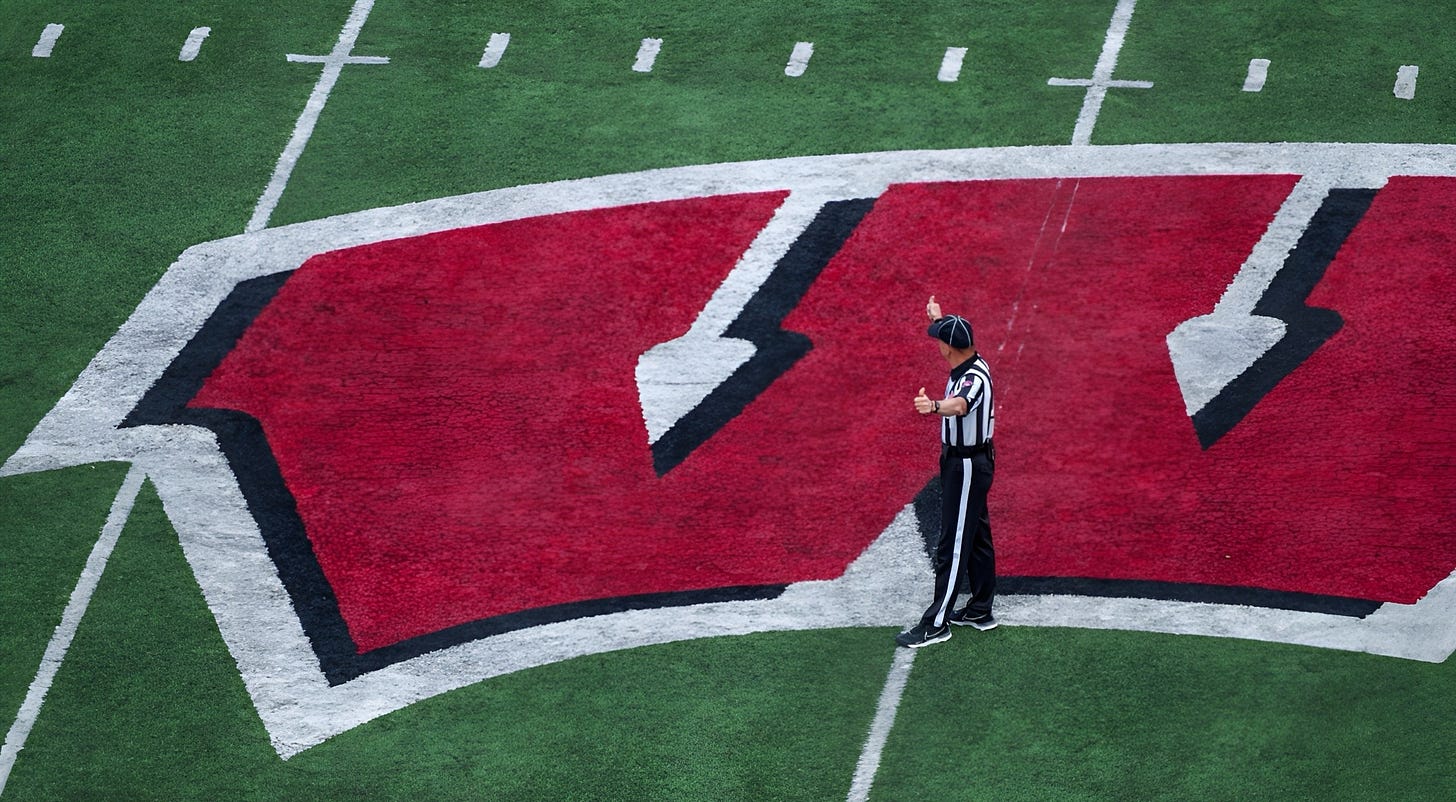
A fresh batch of questions about the University of Wisconsin football program landed in my inbox this week, and they hit right at the heart of where this team finds itself heading into a pivotal offseason.
This mailbag dives into the quarterback dilemma at the center of everything, whether Wisconsin can afford to be patient with internal development, and how much urgency should shape portal decisions moving forward. We also get into where NIL resources should be spent internally if the staff is serious about building continuity instead of constantly hitting reset, and which returning player could tell us the most about whether this staff is truly developing talent behind the scenes.
Inevitably, that leads us back to the bigger-picture question hovering over it all: why the administration is sticking with head coach Luke Fickell through all of the turbulence, and why they still believe there’s hope.
Some fair questions. Some uncomfortable ones. Let’s get into it.
Q: I know the instinct every offseason is to hit the transfer portal and go get another quarterback, but why not just roll with Carter Smith?
– Dave from Da Northwoods.
I understand the question, and honestly, it’s a fair one.
Carter Smith is absolutely a player this staff should invest in and develop. The competitiveness is evident. The mobility is real. He can move the chains with his legs and add a dimension to the run game that Wisconsin has desperately needed under center. And it’s probably not fair to make any firm declarations about what Smith is or isn’t as a passer yet.
Smith finished 26-of-46 for 201 yards with two touchdowns and an interception, and he added another 87 yards and a score on the ground, helping lead Wisconsin to late-season wins over a pair of Top 25 teams.
The Florida native was thrown into action late in the season behind a patched-together offensive line, running a limited offense, after spending most of the season with the third team or scout team. That’s not exactly a clean evaluation environment. Long term, that’s the kind of quarterback arc you want. Recruit a guy, develop him, let him grow, and eventually see the payoff. The problem is, this staff doesn’t have the luxury of time.
This is a win-now season. The 2026 schedule is a bit lighter. The administration has been very public about investing more NIL resources and private funding into the program. At some point, those words have to translate into action, or the credibility of everyone involved takes a hit. Fair or not, that’s the reality of where Wisconsin football is right now.
Because of that urgency, Fickell can’t afford to wager his entire future on Smith. You can’t go into a season like this hoping development catches up in real time at the most important position on the field. If this staff gets quarterback wrong again, or has to navigate injuries, there’s a very real chance they won’t be here in 2027 to see how Smith’s story plays out.
“We know that the QB position is gonna be really key and critical,” Fickell said. “We haven’t shied away from making sure our guys understand that.”
That’s why I still believe Wisconsin has to go out and get a major-impact quarterback in the transfer portal. Someone closer to the top of the market. Someone who can raise the floor of the entire roster immediately. Quarterback is arguably the quickest way to change the makeup of a team, mask flaws, and stabilize everything else that’s a work in progress.
The ideal scenario is spending big at quarterback and retaining Smith. Let him continue to develop without the weight of carrying the program right away. If Smith becomes the future beyond that, wonderful. That’s a win.
But you can’t stake the program’s immediate future on potential alone at this point. There were things to like from Smith, no question. There just isn’t enough margin for error anymore to wait and see if that’s enough.
Q: With so much roster turnover expected this offseason, is there one position group you’d prioritize using Wisconsin’s NIL resources to keep intact, rather than rebuilding it through the portal?
– Allen C.
In the portal era, there’s really no such thing as a position group that doesn’t need help. Even the healthiest rooms are usually forced to backfill snaps or bodies just to survive the standard offseason attrition. That said, if I’m picking one spot where I’d be intentional about using NIL resources to keep the core of current players intact, it starts with inside linebacker.
And not just because of the young talent everyone already knows about.
For me, it begins with Christian Alliegro. At 6-foot-4 and 247 pounds, he looks exactly like what you want from a Will linebacker in this system, and the production backed that up. He finished the season with 53 total tackles, nine pressures, 8.0 tackles for loss, and four sacks. He brings size, range, and versatility, and he’s a player you can deploy in a lot of different ways depending on the matchup. Plus, he’s a leader in that room.
Then there’s Mason Posa, who might already be one of the most important defensive pieces Wisconsin has moving forward. Despite arriving on campus in the summer, Posa worked his way into a significant role and finished with a team-high 61 total tackles in just 363 snaps.
He added 14 pressures, 4.0 tackles for loss, four sacks, two forced fumbles, and a fumble recovery, earning third-team All-Big Ten recognition from the coaches. His 88.3 defensive grade from Pro Football Focus tells the same story the tape does. Posa can defend the run, hold up in coverage, and get after the quarterback. That’s the complete package, and he already plays like the heartbeat of the Badgers’ defense.
Cooper Catalano rounds it out. He’s more of a throwback type, an unheralded recruit who became Wisconsin’s all-time leading tackler in high school and carried that production forward. He finished with 56 total tackles, 4.5 tackles for loss, four pressures, and two sacks. Catalano feels like a true Mike linebacker, a gritty, physical tackler, and reliable. There’s a world where all three of these guys play significant snaps together, especially if the defensive line in front of them plays as it did in 2025.
That part matters. If Wisconsin can rebuild the defensive line this offseason, it opens the door for this group to be disruptive and impactful.
Tackett Curtis entering the portal made sense given how his role changed, and the addition of Iowa Central Community College transfer Taylor Schaefer gives the room some added depth. There’s also Thomas Heiberger, who finally got healthy late in the season and showed flashes after being a highly regarded recruit as an edge-rusher. If you can retain Heiberger as a depth piece, that only helps strengthen the room.
But zooming out, this is a room where I don’t think outside additions necessarily raise the ceiling much beyond what’s already here. What you have is leadership and multiple players with legitimate all-conference upside. That’s hard to replace, especially when you factor in the culture and energy this group provides. Now you just need some continuity.
If I’m allocating resources with an eye toward 2026 and beyond, inside linebacker is the room I’m doing everything I can to keep intact.
Q: Is there one returning player whose trajectory this season could say a lot about whether this staff is actually developing talent?
– BadgerDad78
NIL
Fernando Mendoza NIL deals, explained: How much money Indiana star makes from adidas, other sponsors
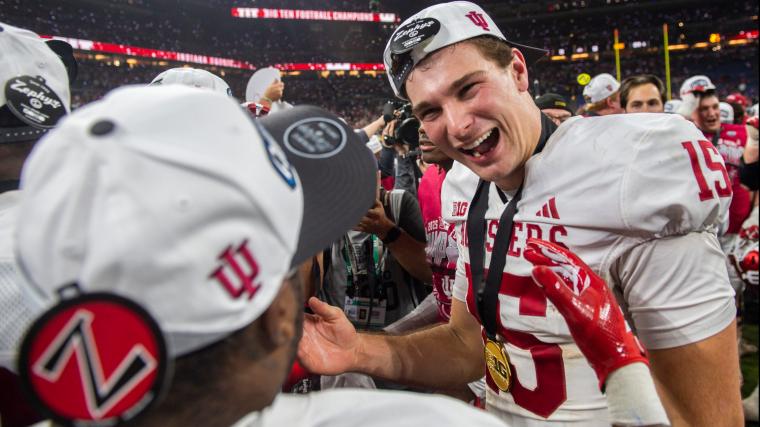
Fernando Mendoza NIL deals, explained: How much money Indiana star makes from adidas, other sponsors originally appeared on The Sporting News. Add The Sporting News as a Preferred Source by clicking here.
Fernando Mendoza has had a magical 2025 season, leading the Indiana Hoosiers to an undefeated 13-0 regular season and the program’s first outright Big Ten title since 1945. Along with breaking program records as a team, Mendoza has produced a historic season of his own.
Advertisement
The redshirt junior quarterback, a transfer from California, shattered Indiana’s single-season passing marks by completing 71.5% of his passes for 2,980 yards and a nation-leading 33 touchdown passes against just six interceptions. He also proved to be a threat with his legs, adding 240 rushing yards and six rushing touchdowns, putting him second nationally in total touchdowns accounted for (39). His remarkable campaign earned him Big Ten Offensive Player of the Year and Quarterback of the Year honors, along with the Walter Camp Player of the Year award. He also became just the second player in program history to be named a finalist for the Heisman Trophy.
As one of the top players in the nation, Mendoza’s rapid rise has made him a face of the collegiate game’s new financial era. His personal brand — which includes a recent high-profile endorsement deal with Adidas and his exclusive “Mendoza Mania” merchandise line — has soared throughout the season.
Here’s a breakdown of how much the Indiana star has brought in.
MORE: Indiana 2025 College Football Playoff tickets guide
Advertisement
Fernando Mendoza NIL money
According to the latest industry valuations, the Indiana star’s Name, Image, and Likeness (N.I.L.) portfolio is valued at an estimated $2.6 million, positioning him among the top five highest-valued college football players in the country.
On3 has the quarterback ranked fifth in college football and seventh in its N.I.L 100. He is listed below only four FBS players:
-
Arch Manning, Texas ($5.3 million)
-
Jeremiah Smith, Ohio State ($4.2 million)
-
Carson Beck, Miami ($3.1 million)
-
Bryce Underwood, Michigan ($3 million)
His valuation spiked from an estimated $1.6 million earlier in the year to $2.6 million after the Hoosiers’ perfect regular season.
MORE: Who will Indiana play next?
Fernando Mendoza NIL deals
Mendoza has two main NIL partnerships.
Advertisement
Adidas
Ahead of Indiana’s 13-10 Big Ten Championship win over No. 2 Ohio State, Mendoza inked a deal with Adidas.
“Excited to share that I’ve accepted an opportunity to join adidas!” said on LinkedIn. “I’m very grateful for everyone who has supported me along the way and excited to bring my passion for sport, leadership, and work ethic to the Three Stripes. Let’s get to work.”
He joins a star-studded adidas lineup that includes Ohio State’s Jeremiah Smith, Nebraska’s Dylan Raiola and Arizona State’s Sam Leavitt and Jordyn Tyson.
MORE: How Curt Cignetti turned Indiana into a college football powerhouse
Advertisement
Mendoza Mania
In collaboration with his brother Alberto, who is Indiana’s backup signal-caller, Mendoza launched a brand-new “Mendoza Mania” Collection on the Indiana NIL Store.
The initiative carries a deeply personal meaning for Mendoza: a portion of all proceeds from the collection will benefit the National MS Society, honoring his mother who continues her courageous fight against Multiple Sclerosis.
This compassionate focus transforms the quarterback’s commercial venture into a vehicle for impact, lending deeper purpose to every piece of “Mendoza Mania” merchandise sold.
By leveraging his national spotlight, Mendoza is driving crucial funds and awareness for the National MS Society’s mission to cure the disease and empower those affected to live their best lives.
Advertisement
MORE: Curt Cignetti’s best quotes at Indiana
Fernando Mendoza net worth 2025
Mendoza’s net worth is not publicly available. Though, sources report that his net worth is in the hundred thousands, reaching up to $1 million.
This will continue to rise as Mendoza leads Indiana through the College Football Playoff, and down the road, becomes a first round pick in the NFL Draft.
MORE: Fernando Mendoza, Curt Cignetti react to Indiana’s rise
NIL
Rece Davis names former Pac-12 coach who should be top candidate for Michigan head coaching job
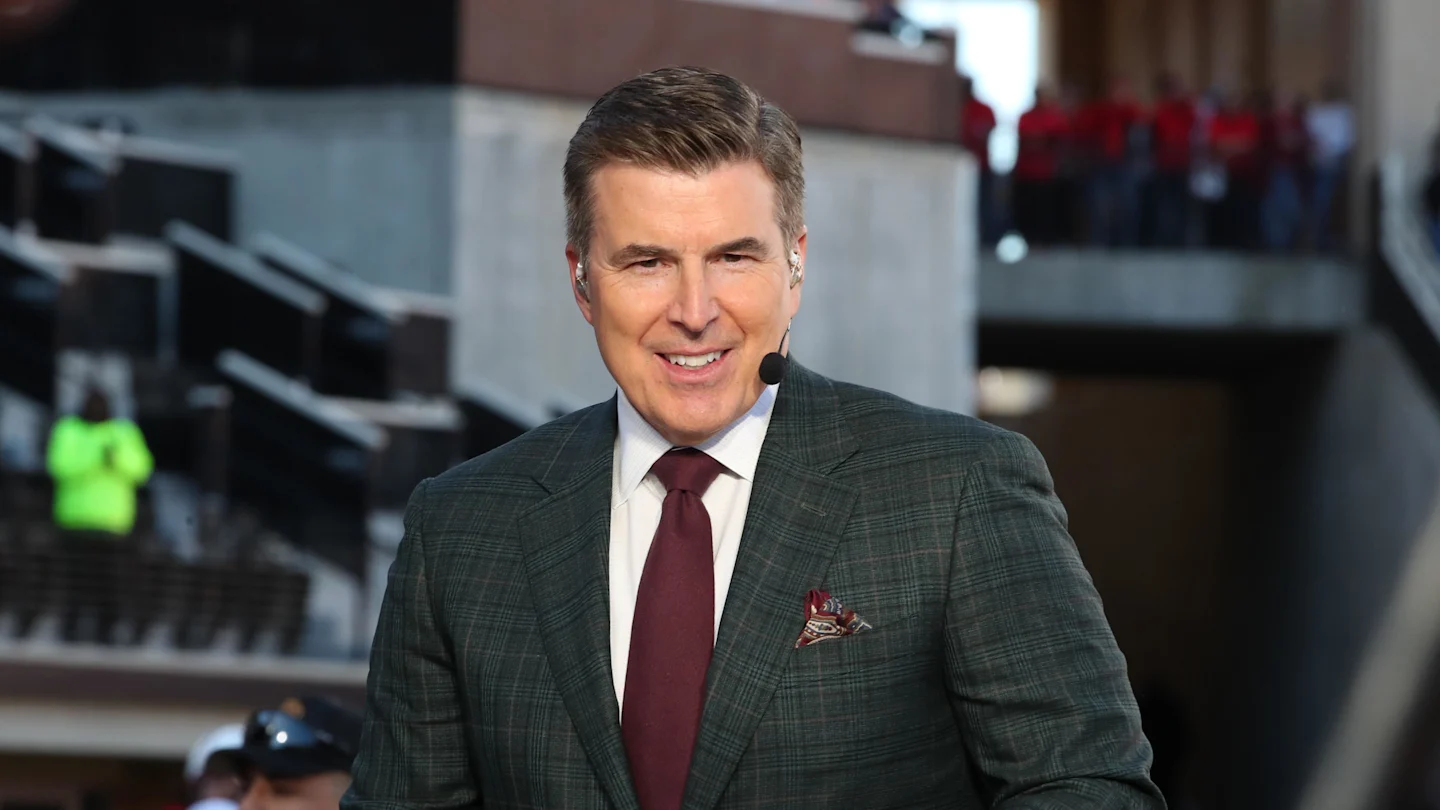
Almost every list of potential head coach candidates for Michigan has had some combination of the same names, like Kalen DeBoer, John Harbaugh, Jesse Minter, Kenny Dillingham, etc.
But ESPN’s Rece Davis had an interesting suggestion that hasn’t been mentioned much at all since the stunning development that led to Michigan firing head coach Sherrone Moore on Wednesday for having an inappropriate relationship with a staff member, and Moore was arrested and charged with stalking and home invasion.
Davis, the host of “College GameDay” and a prominent voice on college football matters, suggested that former Stanford coach David Shaw should not only be on Michigan’s list of candidates but “given the circumstances, likely atop the list,” he posted on social media.
If I were in Warde Manuel and Michigan’s position, I’d have David Shaw very high on my list. Given the circumstances, likely atop the list.
— Rece Davis (@ReceDavis) December 12, 2025
Shaw is in his first season as the Detroit Lions’ passing game coordinator and has not coached in college football since he resigned as Stanford’s head coach at the end of the 2022 season.
Shaw was 96-54 in 12 seasons at Stanford, including five seasons with double-digit wins. His 2015 Cardinal team went 12-2, won the Rose Bowl and finished No. 3 in the final AP top 25 poll. His 2011 and 2012 teams both finished No. 7 in the AP rankings, going 11-2 and 12-2, respectively.
Shaw’s Stanford tenure had two very distinct chapters, though. Through his first eight seasons, he was 82-26, winning at least eight games in every season, collecting three Pac-12 championships, four Pac-12 Coach of the Year awards and the Bobby Dodd national coach of the year award in 2017. Over his final four years, he went 14-28 with three losing seasons.
Shaw’s style would fit seamlessly at Michigan, as his best Stanford teams were known for dominant, physical rushing attacks.

Davis’ suggestion that Shaw should be atop Michigan’s list was beyond just his coaching resume, though.
The Wolverines program is in turmoil with one black eye after another now, from the NCAA investigation into and substantial penalties from the Connor Stalions sign-stealing scandal and now the ugly ending to Moore’s two-year tenure as head coach.
Shaw has his own connections to former Michigan coach Jim Harbaugh, serving as Harbaugh’s offensive coordinator at Stanford before succeeding him as head coach there, but he has a pristine reputation and record free of scandal and was among the most respected coaches in college football during his time with the Cardinal.
It’s not a crazy idea, though Michigan fans will surely prefer a splashier hire and a coach who has excelled in this new NIL/transfer portal era of college football.
NIL
Cignetti, Mendoza, Smith, Ponds earn awards, recognition during ESPN’s college football awards show – The Daily Hoosier
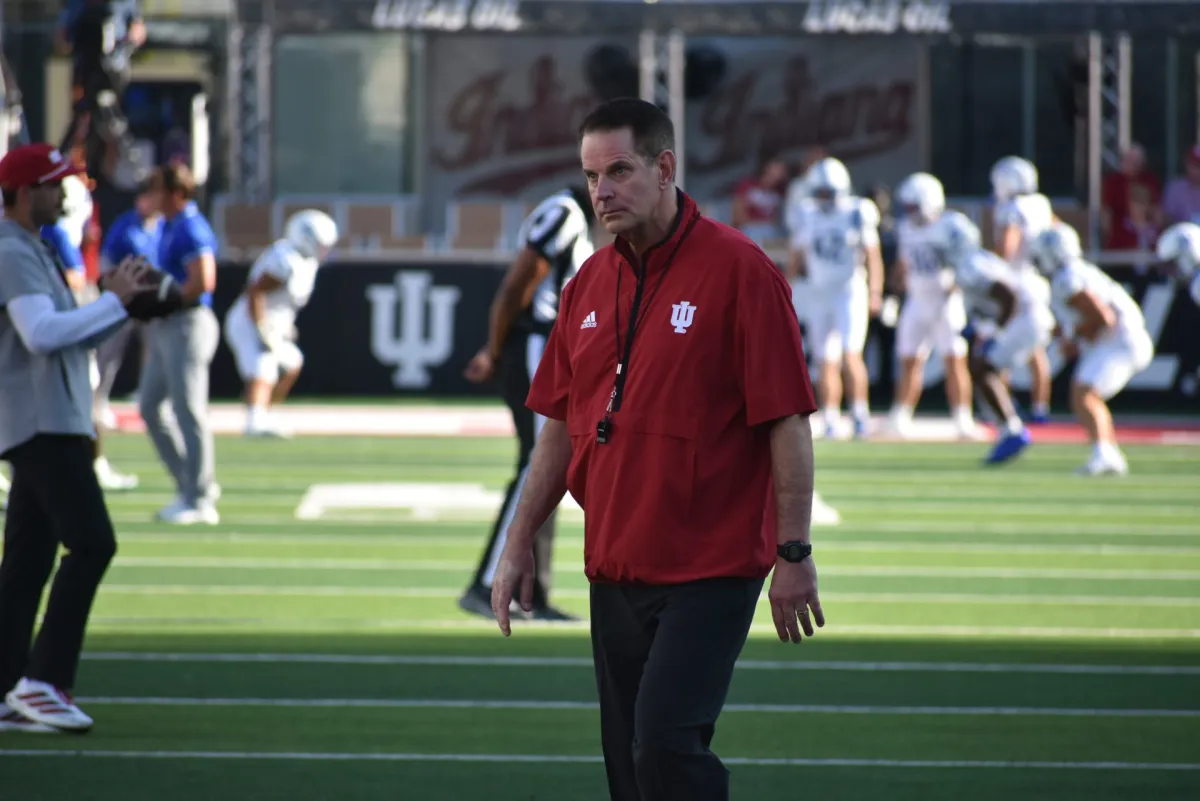
Indiana head football coach Curt Cignetti and quarterback Fernando Mendoza each earned accolades during ESPN’s 35th annual The Home Depot College Football Awards, while a trio of Hoosiers were selected for All-America honors during the telecast.
Cignetti earns his second national coach of the year award this season in the form of the Home Depot Coach of the Year honor. He previously won the Walter Camp National Coach of the Year award. He earned each award in back-to-back seasons. He the first coach to win the Home Depot Coach of the Year award in back-to-back seasons.
Mendoza was named winner of the Davey O’Brien Award and Maxwell Award to go along with his Walter Camp Award earlier in the week. He then joined teammates Carter Smith (OL, First Team) and D’Angelo Ponds (DB, Second Team) on the Walter Camp Football Foundation All-America Team.
Cignetti helped the Hoosiers to its first unblemished regular season in program history, a program-record 13 wins through its first Big Ten Championship Game victory and the No. 1 seed in the upcoming College Football Playoff. On Wednesday, he became the first coach to win consecutive Walter Camp National Coach of the Year honors in the awards 59-year history.
Mendoza is the second Hoosier to win the prestigious Maxwell Award, joining running back Anthony Thompson in 1989. He is the first Big Ten student-athlete to win the award since Penn State running back Larry Johnson in 2002 and the first Big Ten quarterback to win the award since Drew Brees in 2000.
Mendoza currently leads the nation in passing touchdowns (33) and is the Power 4 leader in touchdowns responsible for (39). He is the third Big Ten quarterback since 2000 with three-straight games of at least four passing touchdowns and zero interceptions – C.J. Stroud (Ohio State; 2021) and Kyle Orton (Purdue; 2004, four straight). The Miami, Florida, native is the only FBS quarterback since at least 1996 with multiple games of at least 90 percent completion and four touchdown passes versus Power 4 opponents.
In 2025, Mendoza is the lone FBS quarterback with five games of 4-plus touchdown passes and zero interceptions and entered Championship Week as the FBS leader in percentage of passes that result in a touchdown at 10.9%, over one point higher than the next closest passer (Sayin, Ohio State; 9.2%).
He has thrown a touchdown pass in 12-straight games entering the College Football Playoff and has five games with both a passing and rushing touchdown in 2025. He has thrown 33 touchdowns to just six interceptions, is tied for No. 2 on the team with six rushing touchdowns and has 240 yards rushing on the season.
The Hoosiers earned the No. 1 spot in the College Football Playoff and will play the winner of Alabama/Oklahoma in the Rose Bowl Game on Jan. 1, 2026. The game from Rose Bowl Stadium will kick at 4 p.m. ET
Related
-

 Rec Sports3 weeks ago
Rec Sports3 weeks agoFirst Tee Winter Registration is open
-

 Rec Sports2 weeks ago
Rec Sports2 weeks agoFargo girl, 13, dies after collapsing during school basketball game – Grand Forks Herald
-

 Motorsports3 weeks ago
Motorsports3 weeks agoCPG Brands Like Allegra Are Betting on F1 for the First Time
-

 Motorsports3 weeks ago
Motorsports3 weeks agoF1 Las Vegas: Verstappen win, Norris and Piastri DQ tighten 2025 title fight
-
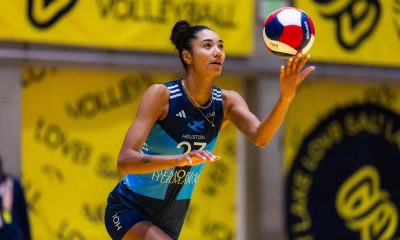
 Sports3 weeks ago
Sports3 weeks agoTwo Pro Volleyball Leagues Serve Up Plans for Minnesota Teams
-
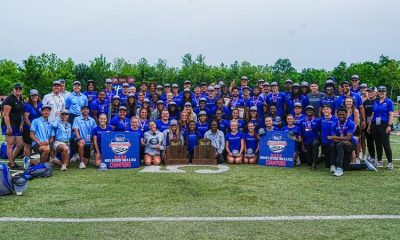
 Sports3 weeks ago
Sports3 weeks agoSycamores unveil 2026 track and field schedule
-

 Sports3 weeks ago
Sports3 weeks agoUtah State Announces 2025-26 Indoor Track & Field Schedule
-

 Motorsports2 weeks ago
Motorsports2 weeks agoJo Shimoda Undergoes Back Surgery
-

 Motorsports2 weeks ago
Motorsports2 weeks agoRedemption Means First Pro Stock World Championship for Dallas Glenn
-

 Rec Sports2 weeks ago
Rec Sports2 weeks agoRobert “Bobby” Lewis Hardin, 56



























